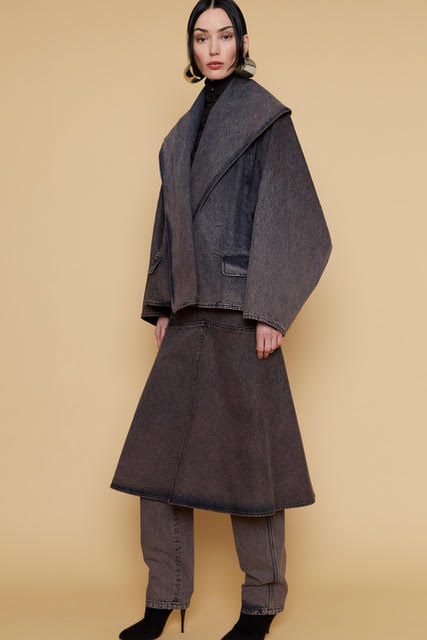Veronique Leroy: Timeless Trendiness

While she maintains a lower profile than some of her peers, Véronique Léroy is a best-of-class designer, rising through the ranks during the ’90s and maintaining a steadfast clientele ever since. Originally from Belgium, she never ceases her exploration of established and non-conformist taste, her experimentation with volumes, and her alluringly offbeat vision of femininity.
How would you describe your evolution as a designer/brand?
I would say it is like a slow, gradual, maturation and growth. I can only grasp and analyse it with hindsight. It’s always hard to be fully aware of how you’re evolving on the spot. There have been important steps, but I didn’t know I was taking them at the time…
Why is it important that fashion is always evolving, that it never stays the same?
I wouldn’t say it’s important, but rather it is intrinsically what fashion is all about: loving something and doing the exact opposite three years after. Going from micro-waist trousers to baggy pants. Otherwise, we would be bored and would only have classic clothes. It doesn’t mean we have to change our wardrobe at the same pace. I always notice that when a client buys a very trendy piece, but this piece is a part of her personality – or she makes it a part of her personality – then it remains trendy forever. It becomes timeless and we conceived it to be that way. This remains true despite the garment not being a basic, timeless design in itself, which is kind of magical. Trendiness becoming timelessness.
What moment, design or collection marked a turning point for you?
Very much the ’80s. It was a very creative decade. I’ve been very much shaped by this spirit and context. And I think this uninhibited – the freedom to just try and do something new – creativity is just coming back.
Where are you noticing the most significant changes in fashion today?
The realization of the industry’s environmental impact. Some designers used to make things which were sustainable in a way, like Martin Margiela; but it was never with the environment in mind. It was always an unwanted consequence of what the true motive was (love of second-hand clothes for example). The new generation of designers are very promising partly because they are fully aware of this and it’s fully part of their work.
Are you using any technologies that contribute to the evolution of your collections?
It’s rather the opposite. At the studio we’re working the old-fashioned way, just like the first couture studios. We are craftspeople, and we think you can tell when you touch one of our garments. At least we hope so.
Evolution is gradual; revolution is radical. Is fashion still capable of revolution?
Fashion has always undergone radical shifts. The big changes are systematically going from one thing to the opposite, from minimalist to maximalist. This is a perfect environment to pave the way for profound revolutions.
This interview has been lightly edited for clarity.



